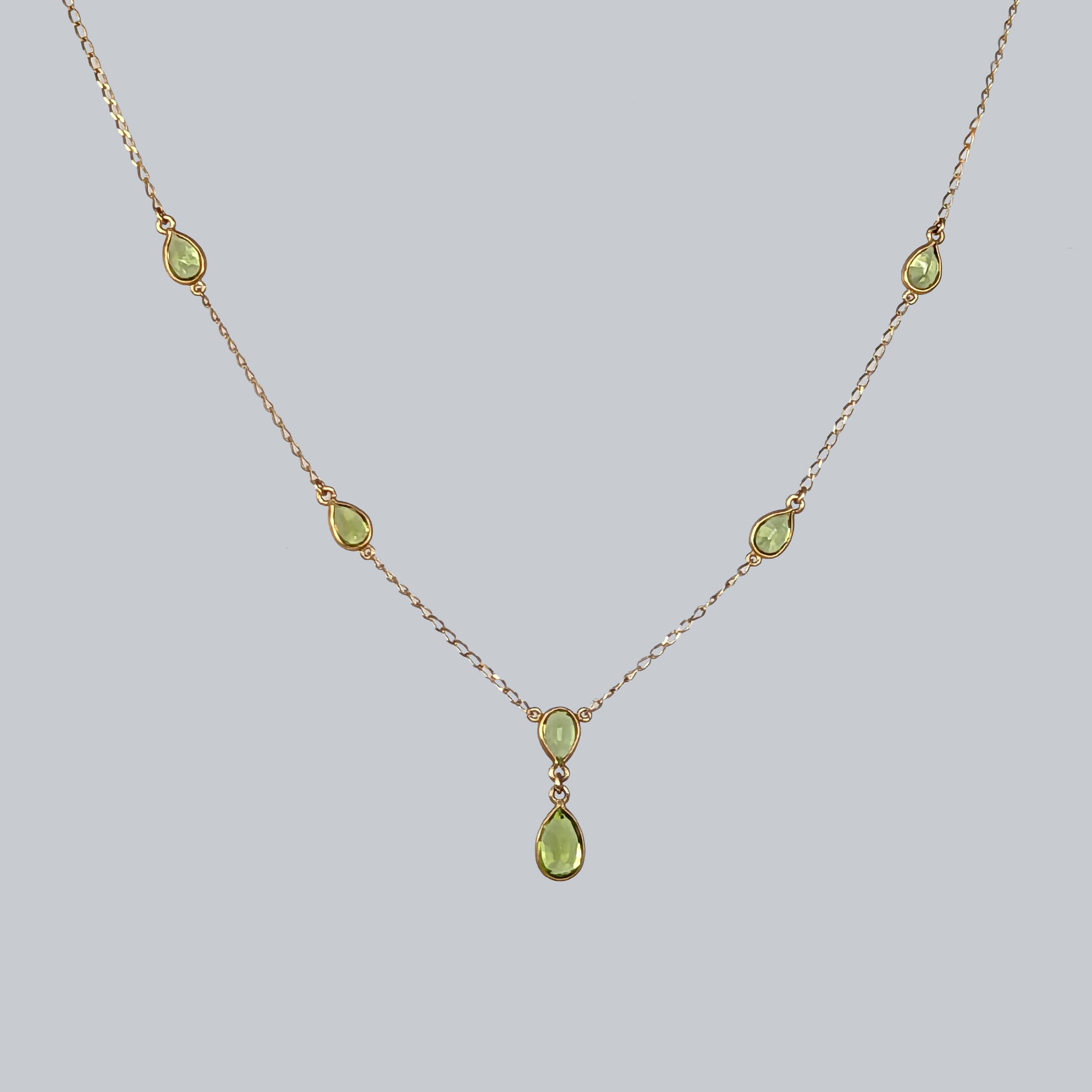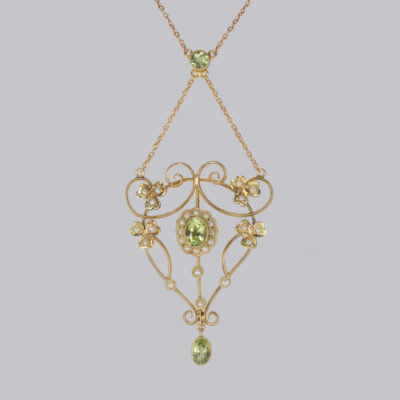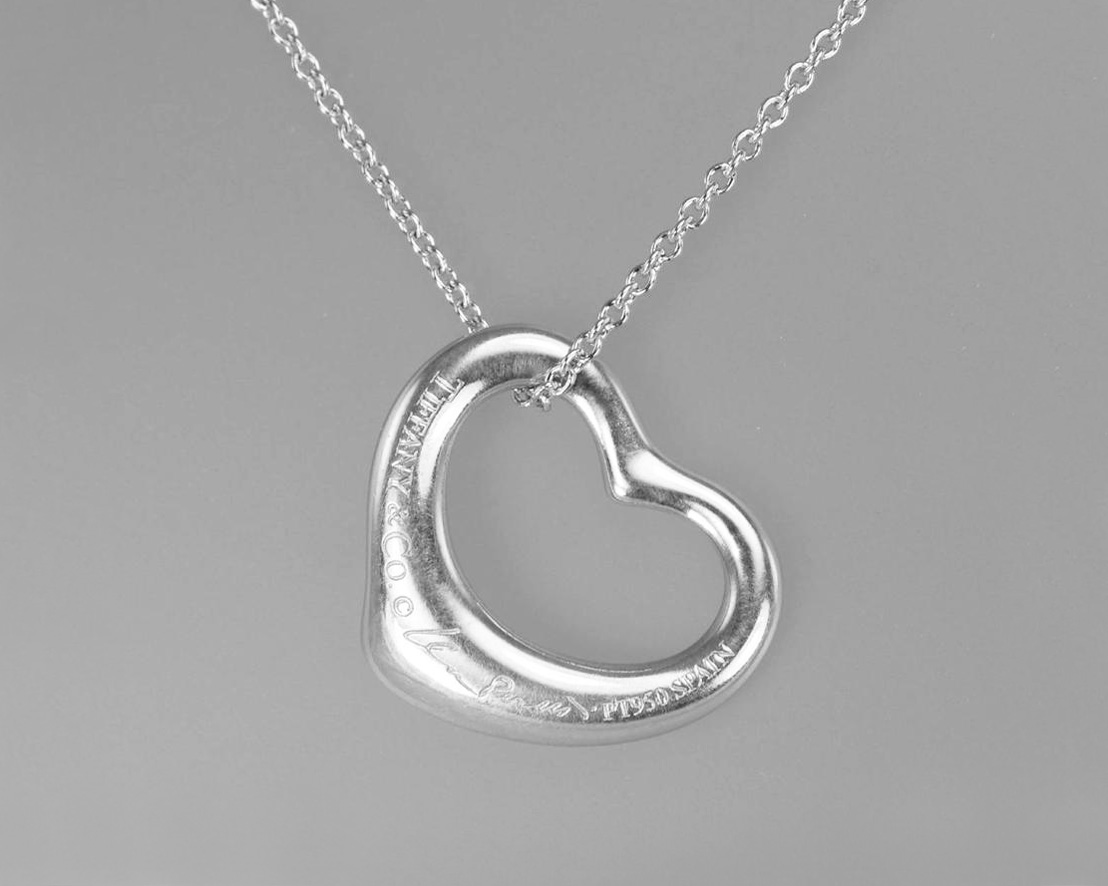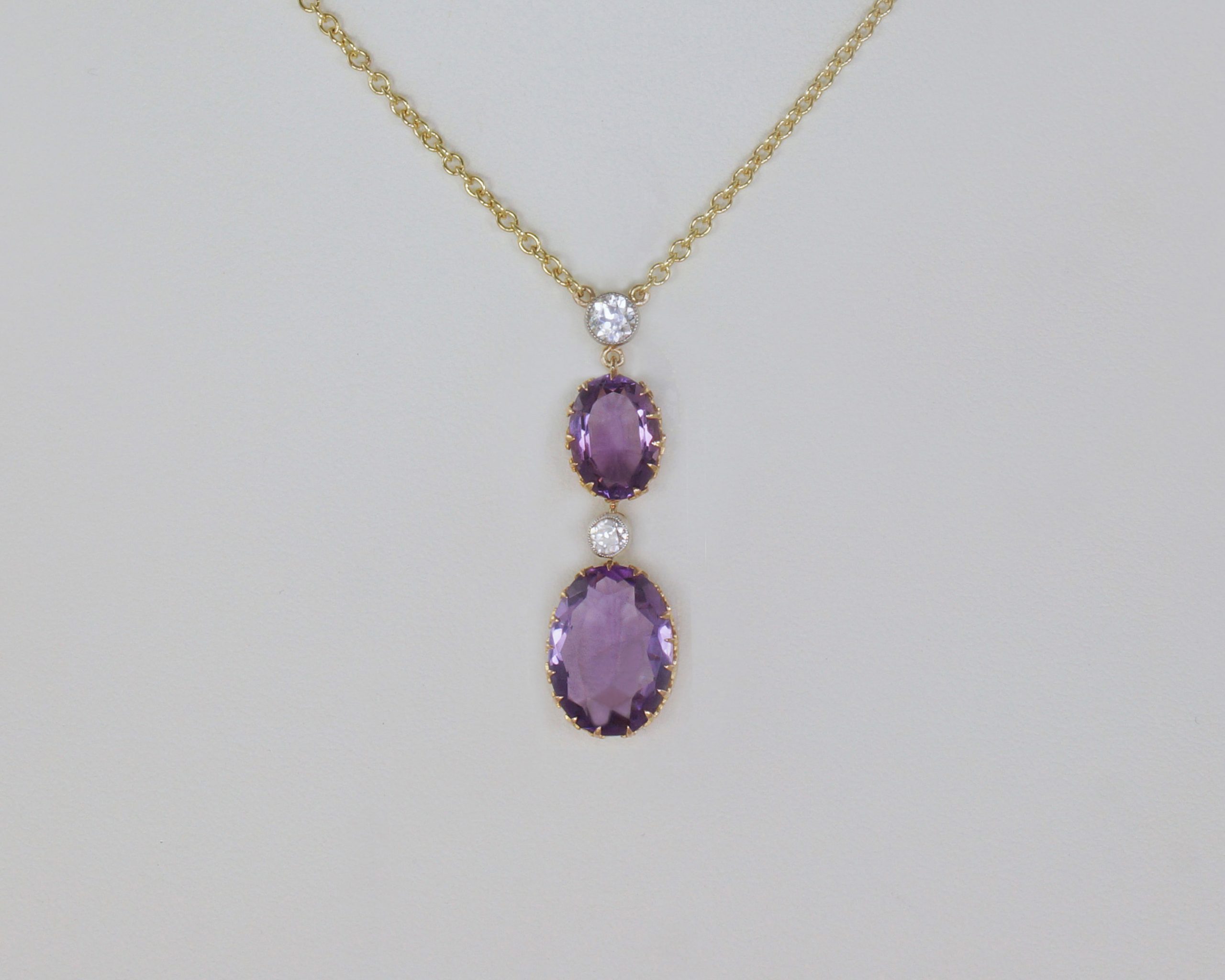Description
Fabulous vintage peridot 1960s necklace
Designed with six gorgeous lime green teardrop peridots set on graceful gold chains
The necklace is crafted in 9ct gold in the Edwardian style
This elegant necklace hangs so beautifully and is so easy to wear
- Bottom peridot on drop 8mm, other 6 peridots 6.5mm
- Necklace 17″ (43cm) long
- Bottom drop 2cm
- Plaque by clasp marked Made in Italy with 9ct gold import hallmarks
- Plaque and lobster clasp stamped 9KT
- It dates to around 1960s
- Weight 2.5 grams
- This charming vintage peridot 1960s necklace is in excellent condition
- It comes in the presentation box illustrated
- Our ref 23107
See more beautiful necklaces and pendants
Peridot
In the past peridot was called olivine. It is often mis-identified as chrysolite, a yellow – green chrysoberyl. The finest peridot is a deep apple green colour and was first found on the Isle of St John in the Red Sea. Peridot has been used in jewellery at least since the Roman times. Most peridot available today is of Victorian extraction or later. In the 1700s peridot was used to decorate fob chain ornaments and objects of virtue. In the early and mid-Victorian times ladies wore complete parures, tiara, necklace, earrings, brooch, bracelets, and ring. At the end of the 19th century peridot found favour in 9ct and 15ct open work pendants, often in the presence of pearls.
Carat can refer to the quality or purity of gold – pure gold i.e. a metal that is 100% gold and nothing else but gold, is known as pure gold or 24-carat gold. So for example with a ring which is 18ct i.e. 18/24s gold or put another way, 18 divided by 24 is 0.750 or 3/4. You may see jewellery marked 0.750 which is a somewhat modern way of writing 18ct as we say in the UK and 18k as they say in the rest of the world. In general, if we are talking of UK jewellery a piece marked 750 will have been hallmarked/produced after 1975. The hallmark standard of 15 carat .625 was ended in 1932 and now has a certain cachet and of course an elevated price. The colour of pure gold is yellow. However, if gold is mixed with other metals it can become a silvery colour, known as white gold, or copper when it is then known as rose gold. Also, the colour of rings can be changed simply coating the ring with another metal. A common procedure is to rhodium plate rings to make them silver in colour, this procedure is also used to make white gold rings brighter and shiny, however rhodium plating wears off over time.












